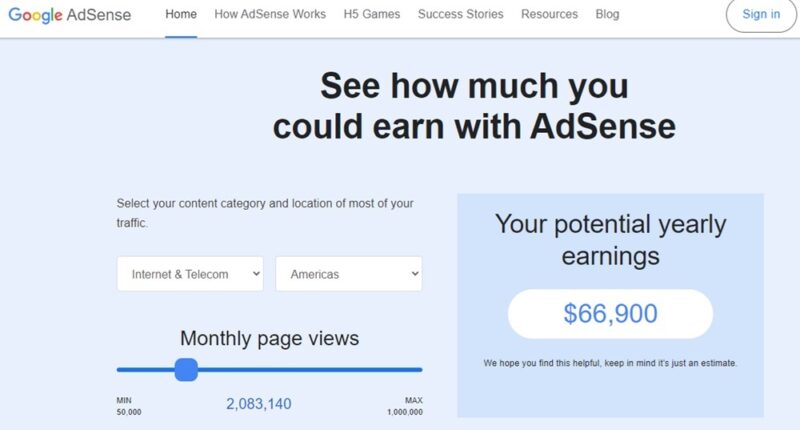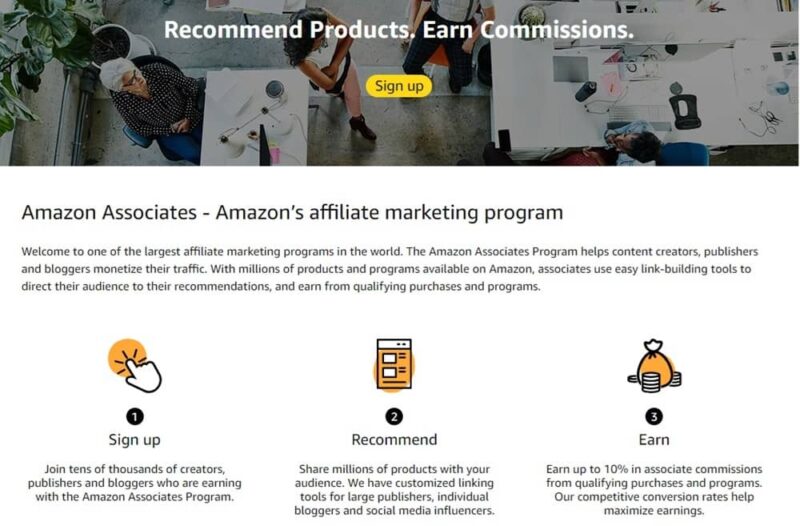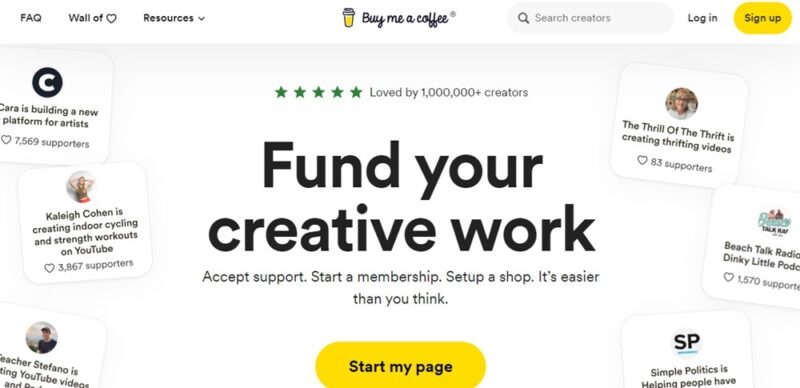Unless you’re just feeling extra charitable, you probably want to make money from your content. While options used to be limited for online creators, you now have a wide variety of options to create the right income stream for you.
1. Display Ads
Ads are an old-school approach that’s still effective today. This might mean having ads scattered throughout a post, just in a header or sidebar, or as pop-ups. Of course, not everyone loves ads, but if you want to monetize content without much extra effort, they’re a necessary evil.

Google AdSense is the most well-known, but it’s far from the only ad network. Amazon Publisher Services, Adsterra, Media.net, and SmartyAds are just a few other options. Earning potential varies greatly based on your type of content and traffic. But, just remember, ad-blockers often limit this revenue source, so it’s a good idea to have a backup.
2. Sell Your Own Products
Nearly every niche can have branded products. For instance, if you create written content with quotable tidbits, sell mugs, shirts, notebooks, and more with some of your audience’s favorite quotes. Print-on-demand services work well for physical products, so you don’t have to manage inventory yourself. Sites like CafePress, Zazzle, and Redbubble make it easy to get started.
For digital products, easily sell those directly from your own site (just like here on Contentimizer) or use a digital marketplace like Gumroad. Sell special reports, bundled posts, templates, and most anything else you could think of.
3. Become an Affiliate
Affiliate marketing has quickly become one of the most effective ways to make money from content. Plus, you have full control over what products you choose to align your brand with. One of the most popular affiliate marketing programs is Amazon.com Associates, simply because it’s such a large marketplace.

But, you’re not limited to Amazon. Love a particular app or online tool? Many businesses and services have affiliate programs. Just place a link and/or image in your content promoting the product/service and get a share of the profits when someone buys it. However, always disclose affiliate links, or you could get in trouble.
4. Create Subscriptions
Some content creation platforms have decided to eliminate ads in favor of subscriptions. For instance, Medium charges $5/month or $50/year to read unlimited content without ads. Content creators then get a share of that revenue. And, look at all the YouTube channels offering premium memberships. The point is people are willing to pay for valuable content.
No matter what type of content you create, whether it’s blog posts, vlogs, web comics, or something else, a subscription model is a viable revenue source. For most creators, it’s best to offer a mix of free and premium content. For example, a web comic might share some comics for free, then offer a premium series or even just early access to paying subscribers. Some sites have subscriptions just to remove ads.
5. Teach Others
Do you have advice others might find helpful? Share it and make money. Courses are a popular way to make money from content. You start by offering some basic information to help people get started. Then, you create a course that goes far more in-depth into the topic.

For instance, this post talks about ways to monetize content. There could then be a separate course for each income stream to show exactly how to go from beginner to pro. You can easily host your own courses or use a course hosting platform like Thinkific or Podia.
6. Create Sponsored Content
Once you start getting decent traffic and/or followers, sponsored content is a possibility. You might reach out to different brands and businesses to ask about partnerships or they might contact you instead. If you plan to go this route, add a section to your website and social profiles about sponsorship opportunities and how to contact you.
7. Ask for Tips or Donations
Another strategy to make money from your content is tipping or donations. These can be one-off payments or recurring, much like a subscription. For brand-new creators that might not have enough content or traffic for some of the other strategies, this is a good alternative.

Of course, established creators can take advantage of this too. For instance, many YouTube creators have links in their profiles to send a tip. For those who don’t want or can’t afford memberships, it’s a way for them to support their favorite creators and content. Platforms like PayPal let you get paid via a link or button. Buy Me A Coffee lets you accept tips, manage memberships, and even sell products.
8. Create for Others
This method requires a little more work. Instead of just creating content for yourself, sell your skills to others. If you’re a blogger, write content for fellow bloggers and sites and get paid. Vlogger? Partner with sites/magazines in your niche and create content for them. Sell your skills, using your existing content as a portfolio.
9. Offer Your Content in Different Mediums
You don’t have to restrict your content to one form. If you do videos, then start a blog with written versions of your videos. Write content? Create videos of the content. This lets you reach a larger audience. Plus, each medium you use offers different income earning potential.
For instance, if you write tutorials, you could have ads or affiliate links to monetize the text. Then, create a YouTube video showing the steps that also includes ads.
Creating content is hard work, no matter how much you enjoy it. Make money from your content by using one or more of the above methods. Ideally, pick at least two to create a more reliable income stream.
Image credit: Unsplash
